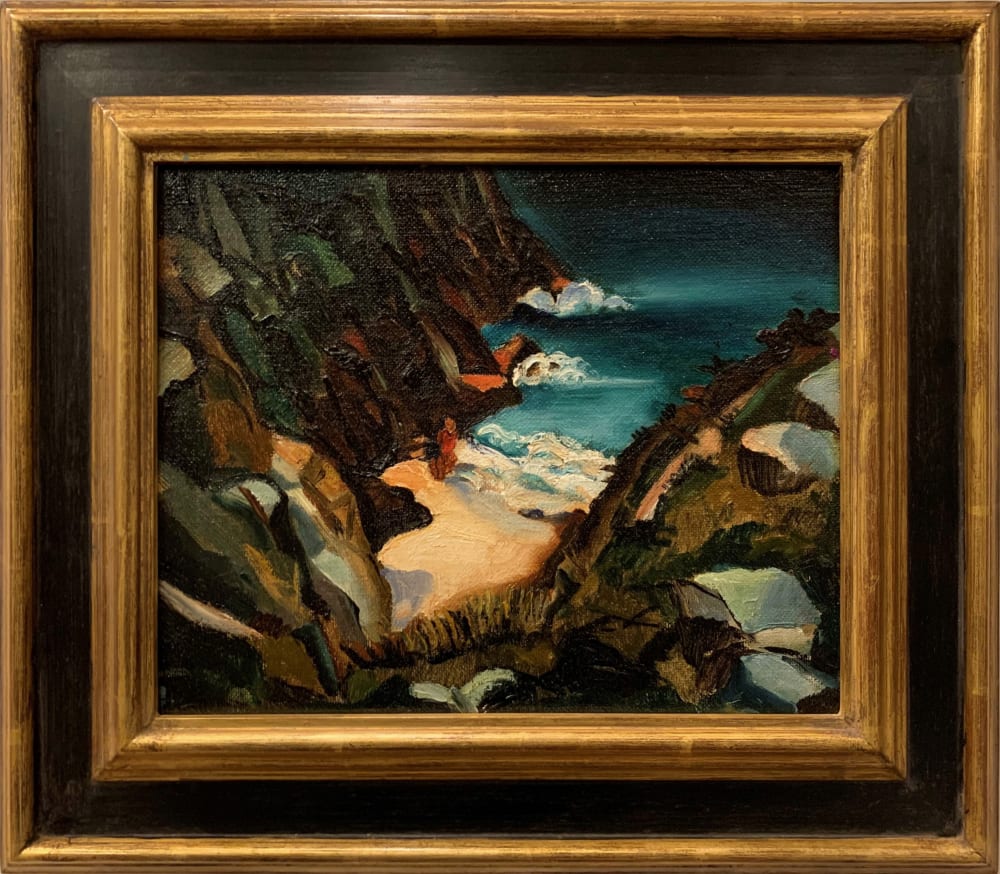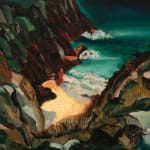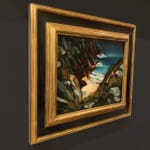Christopher Wood 1901-1930
Framed: 36 x 41 cm (14.2 x 16.1 ins.)
Further images
Provenance
Christopher Wood’s family.
Christie's, London, 11 November 1988, lot 396.
Sandra Lummis Fine Art, London.
Private collection.
Exhibitions
Part of the major retrospective at the Redfern Gallery, London, March-April 1938 (exhibit no. 295). Christopher Wood: Exhibition of Complete Works.
Literature
Eric Newton, Christopher Wood 1901-1930, London, 1938, no. 128.
The Cove will be in the Catalogue raisonné presently being compiled by Robert Upstone.
1926 was the year that Christopher Wood first met the artists Ben and Winifred Nicholson, with whom he formed a deep and lasting friendship, sharing their direct approach to the depiction of the landscape. Travelling with the Nicholsons, Wood also first visited Cornwall in 1926, painting The Cove during that first trip. From then until his untimely death in 1930, the Cornish coast was to have a deep impact on the artist. This first trip was vital to the development and emergence of his lyrical and deliberately naïve style. Cornwall’s rocky coastline and small villages were the antithesis of cosmopolitan Paris, and greatly inspired Wood.
The Cove (1926) is a lovely example of what Eric Newton described as Wood’s gift “… to make the everyday both magical and mystical, and of performing the miracle effortlessly.” The ingredients of Wood’s magic are things available to us all, at least in Cornwall – boats, white houses, stone walls, fishing nets, sea foam and sandy coves. Out of these simple, everyday ingredients, Christopher Wood forged a series of uniquely lyrical paintings. As Newton put it, “His Cornish and Breton seas are fretted with a foam that can only be seen through magic casements”.
Looking at The Cove it is not surprising that friends and contemporaries describe how Wood painted swiftly and without hesitation, as though he had merely to obey the commands on his inner eye. It is impossible to look at the present work and not perceive the artist's spontaneity and confidence. His colour palette was sensual and distinctly ‘Wood’. The intense green of Cornwall’s sea, that we again see in The Cove, struck the artist on this first Cornish trip, ‘the coastline is arid with huge rocks and towering black cliffs, and little coves and creeks with the greenest water you ever saw’.** But there is also an intensity in the mood of this early Cornish work, with Wood’s signature sense of mystery personified by the figures in the tiny cove.
In 1938 The Cove was exhibited in the major exhibition organised by the Redfern Gallery at the New Burlington Galleries, which attempted to re-unite Wood's complete works. The Cove will be included in the Catalogue raisonné presently being compiled by Robert Upstone.
** From a letter to Wood’s mother quoted in H. Gresty, Christopher Wood, The Innocent and the Modern in Christopher Wood: The Last Years 1928-1930, exhibition catalogue, Newlyn, Art Gallery, 1989, p. 8.







